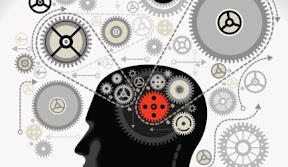- 3/27/14
Mastering the art of scaling a human organization requires learning when and how to shift gears from fast to slow ways of thinking.

Nobel Prize winner Daniel Kahneman demonstrates that human beings are blessed and cursed with the ease and speed with which we can make judgments and take instant and largely mindless actions — “the automatic System 1” as he calls it.
Human organizations, with their ingrained histories, rules, practices, standard operating procedures and mindsets, are similar. When people who work together share the right skills and motivation, coordinated and often complex action can unfold rapidly and with few errors. When it comes to scaling, this happens when an organization is packed with people who embrace and act on a shared mindset.
But there is danger in relying on ingrained behaviors too early and too often, even though people and organizations are prone to do so. A study by Boston College professors Clifford Holderness and Jeffrey Pontiff examined the fate of 122,765 American prisoners of war captured during World War II. They examined whether the senior officers among the POWs replicated the military’s rigid hierarchy or moved to a flatter and more flexible organizational structure in the camps.
The results were striking: prisoners in the most hierarchical camps suffered a death rate about 20 percent higher than their counterparts in the least hierarchical camps. Traditional hierarchies are effective given the need for quick and coordinated action on the battlefield, but they are too rigid given the flexibility and individual judgment required in prison camps. Captured senior officers who automatically replicated and clung to the traditional military mindset created inferior organizational structures compared to those who realized that a different model was required and then acted on such beliefs.
The broader lesson is that mastering the art of scaling a human organization requires learning when and how to shift gears from fast to slow ways of thinking. As Kahneman suggests, slowing down and thinking about what you are doing and why — shifting to that laborious, reasoned, deliberative and conscious “System 2” thinking, as he calls it — is the best defense when “you are in a cognitive minefield” — when you don’t know enough, risks are high or you are stuck.
Shifting to System 2 often requires forcing yourself to pause rather than plow ahead. This shift is demonstrated by some advice that Harvard Medical School professor Jerome Groopman got when, as a young doctor, he was unsure of a patient’s diagnosis. Dr. Linda Lewis instructed Groopman: “Don’t just do something, stand there.”
When it comes to scaling, System 2 thinking means doing the required upfront work to select, design and refine what you are going to spread and how to spread it, and constant vigilance is essential so that those easy and automatic responses that are hallmarks of System 1 don’t impair your efforts to sustain and keep improving excellence once your mindset and moves are deployed.
Nissan CEO Carlos Ghosn put it this way: “You have to be like a race car driver — you need to know when to accelerate, when to brake and when to change gears.” Consider the approach used by Stanford University professors Chuck Eesley and Amin Saberi to teach entrepreneurship to some 10,000 online students. In developing an online learning platform that promoted accountability among far-flung students, Eesley and Saberi used a blend of System 1 and System 2 thinking.
The teaching team often slowed down, thought about, built and tested methods that later reduced the burden on themselves by making it easy for students to post and grade work, to judge one another’s effort and skill, to form and work in teams, and for mentors to select and guide teams.
In Ghosn’s lingo, Eesley and Saberi figured out when to take their foot off the gas, downshift and hit the brakes so that later on they (and their students) could put the pedal to the metal and fly down the road.
In Ghosn’s lingo, Eesley and Saberi figured out when to take their foot off the gas, downshift and hit the brakes so that later on they (and their students) could put the pedal to the metal and fly down the road.
Based on an excerpt of the new book “Scaling Up Excellence: Getting to More Without Settling for Less” by Stanford University professors Huggy Rao and Robert I. Sutton. They can be reached at editor@talentmgt.com.


No comments:
Post a Comment